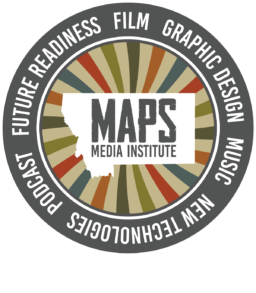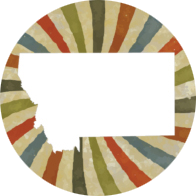Class Description
This class will lead students through the art and technique of digital photography, emphasizing the diverse perspectives on water usage, conservation, and the natural beauty of the Bitterroot River. Using techniques such as perspective, composition, emotion, and storytelling, students will photograph selected subjects to depict their relationship with the river. By the end of the class, the collection of compelling photo essays will narrate the story of the river’s recreational users, stewards, and the surrounding ecosystem, culminating in a public exhibition in August 2024.
Learning Objectives: in this class, students will learn about
- How to complete artistic research
- How to utilize the functions of the camera for creative purposes
- How to tell a story through editorial photography
- The art of the peer critique and give peer critiques on the progress of student work;
- Opportunities and potential resources on career pathways;
- How to distribute, exhibit, and promote artwork for a variety of audiences.
Equipment
- DSLR cameras
- Reflector
- Portable Lights
- Apple or PC computer
Software
- Lightroom or Bridge
- Photoshop
Deliverables: Students and Class Projects
- These deliverables will not only mark the culmination of the students’ hard work and learning but also aim to raise awareness about conservation efforts and foster a deeper connection between the community and the Bitterroot River.
- Photo Essays:
- Individual Photo Essays:
- Each student will produce a photo essay that narrates their unique perspective on the relationship between humans and the Bitterroot River. These essays should incorporate portrait photography, landscape shots, and storytelling elements to convey a coherent narrative about water usage, conservation, and the river’s natural beauty.
- Class Compilation:
- This is a collective photo essay combining selected works from all students, showcasing the range of perspectives and narratives about the Bitterroot River. This compilation will be prepared for public exhibition and publication in digital or print formats.
- Individual Photo Essays:
- Exhibition Preparation Materials:
- Printed Photographs: High-quality prints of selected photographs for the public exhibition.
- Exhibition Layout Plans: Detailed plans for arranging and presenting photographs in the exhibition space, including captions, informational panels, and interactive elements, if applicable.
- Promotional Materials: Designed materials to promote the exhibition, such as flyers, posters, and digital content for social media and email campaigns.
- Documentation and Analysis:
- Project Portfolios:
- A comprehensive portfolio from each student, including all photographs taken, edits made, and a selection of final images included in their photo essay.
- Portfolios should also contain reflective essays discussing their approach, challenges, and learning outcomes.
- Class Reflection Document:
- This is a collective reflection document highlighting the class’s learning journey, key takeaways from the project, and insights on the significance of the Bitterroot River to different stakeholders.
- It will serve as a valuable resource for future classes and projects.
- Digital Archive:
- Online Gallery: An online platform or website hosting photo essays and exhibition materials, ensuring accessibility for a broader audience unable to attend the physical exhibition.
- Community Engagement Outputs:
- Public Exhibition Event:
- This well-organized event marks the opening of the photo essay exhibition, and invitations were extended to community members, conservation groups, local artists, and media outlets.
- Educational Workshops or Talks:
- Events coinciding with the exhibition, where students or guest speakers can discuss topics related to digital photography, conservation, and the significance of the Bitterroot River.
- Public Exhibition Event:

